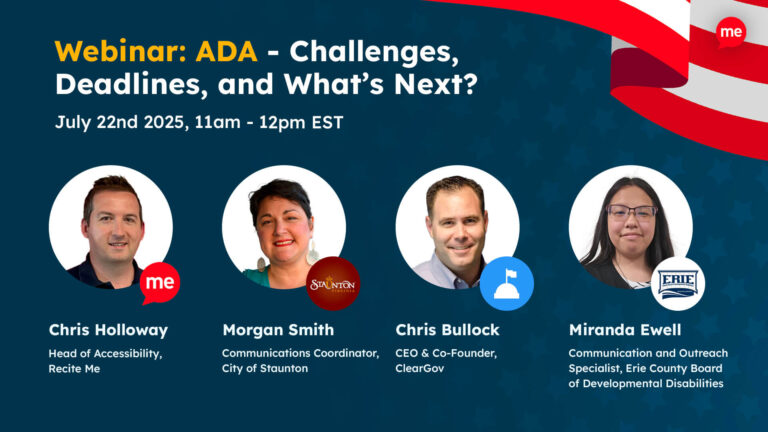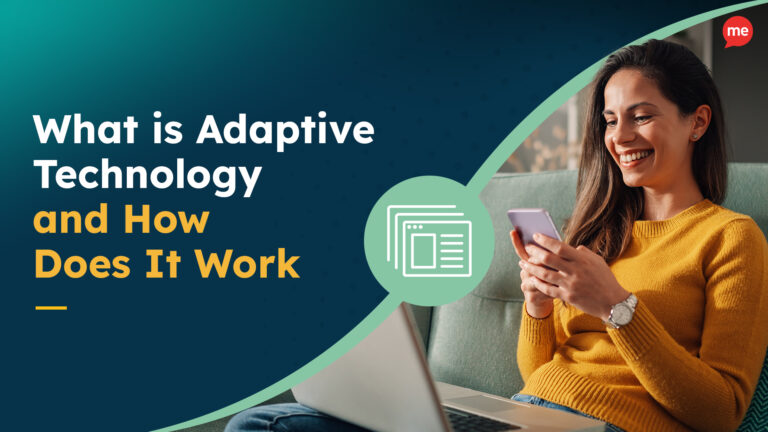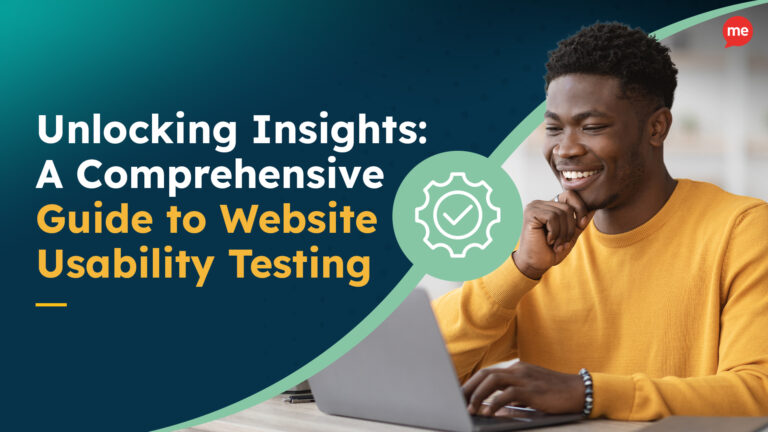Get Your Free Accessibility & Inclusion Toolkit
Download NowThe terms equality and equity may sound similar, and are sometimes (incorrectly) used interchangeably.
Making a distinction between the two is integral to our business goals here at Recite Me. So, as the theme for this year’s International Women’s Day is #EmbraceEquity, we wanted to take a deeper look into both terms and how equality and equity factors can affect you, your organization, and the customers and communities you serve.
What is the difference between Equity and Equality?
Equality means giving everyone the same resources or opportunities.
Equity goes the extra step by recognizing that every individual is unique. Being equitable means accounting for varied circumstances and allocating the exact resources and opportunities to each person needs to receive an equal outcome.
Put simply, equity means understanding that not everyone starts in the same place, and making adjustments for fairness based on individual needs. We tend to think of ‘being fair’ in terms of giving everyone the same thing. But, very rarely does that work out.
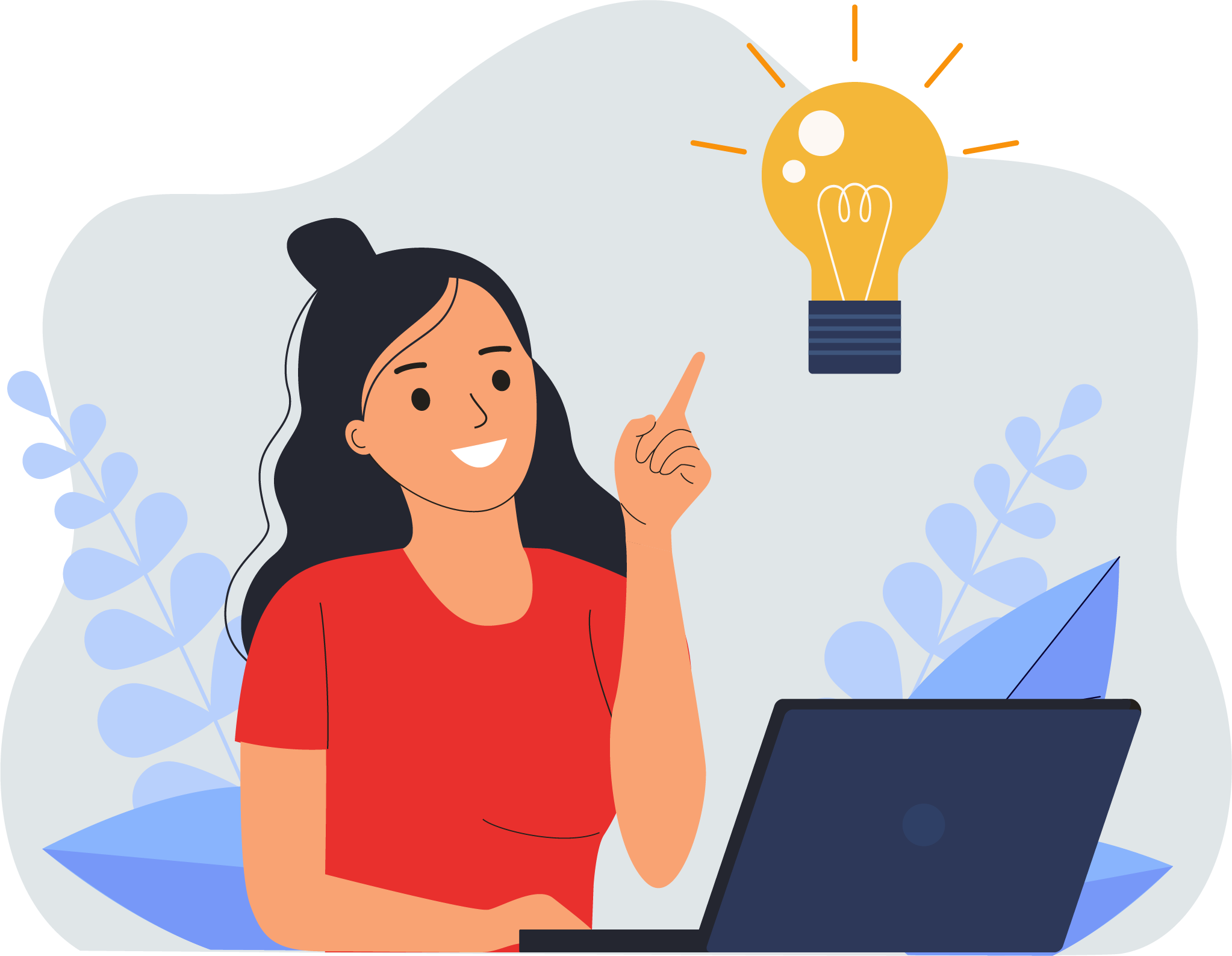
Equality Definition
Equality is about ensuring that each individual is given an equal opportunity and is treated in a fair manner.
Furthermore, equality asserts that no one should face reduced opportunities because of factors such as their birth, background, beliefs, or disability status.
Equality acknowledges that historically, certain groups of people with protected characteristics, such as disability, race, sex, gender, and sexual orientation, have endured discrimination.
Equity Definition
Equity means that each individual or member of a group is provided with the resources or opportunities necessary to achieve their goals, taking into consideration the unique circumstances and challenges they may face.
Equity recognizes that some people may encounter adverse conditions and barriers that make it more challenging for them to attain the same level of success, even when exerting the same effort. It advocates for those who have been historically disadvantaged, taking into account historical and external factors when determining what is fair and just.
Equality and Equity in Pictures
It’s often much easier to see the difference between equality and equity visually than explain it in words. You’ve probably already seen some of the most famous graphics of the difference between equity vs equality:
Three people are picking fruit from opposite sides of the same tree. However, the tree is leaning to one side, so although both individuals have equal access, it’s much harder for one to access the fruit than the other. Equity is providing a taller ladder on one side or propping the tree up so it’s at an angle where access is equal for both people.
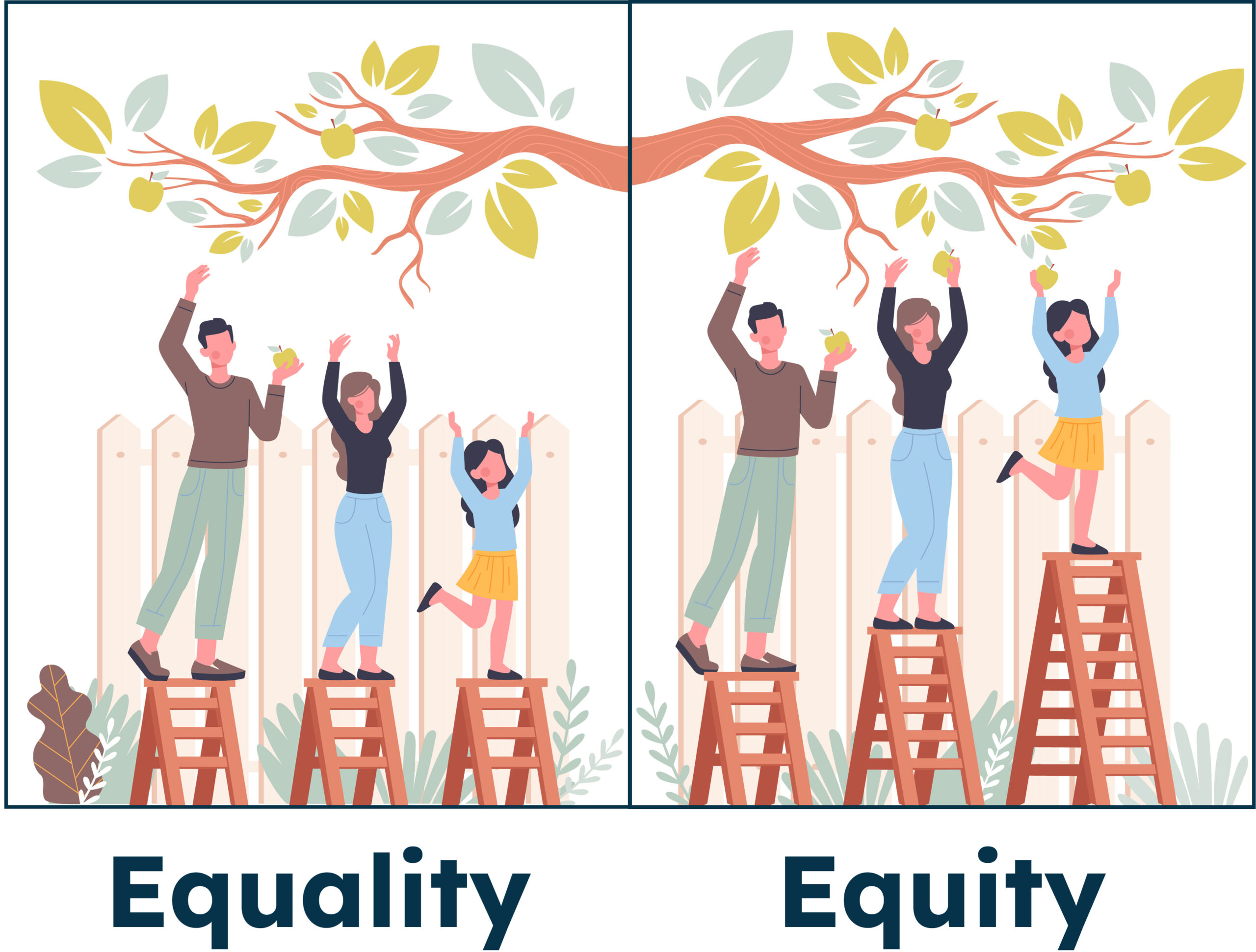
A line of people of different heights are watching an event from behind a fence. Equality is giving equal opportunity for each person to get a box to stand on to get a better view. Equity is giving each person a box of the right height for their stature, so they all get the same view.
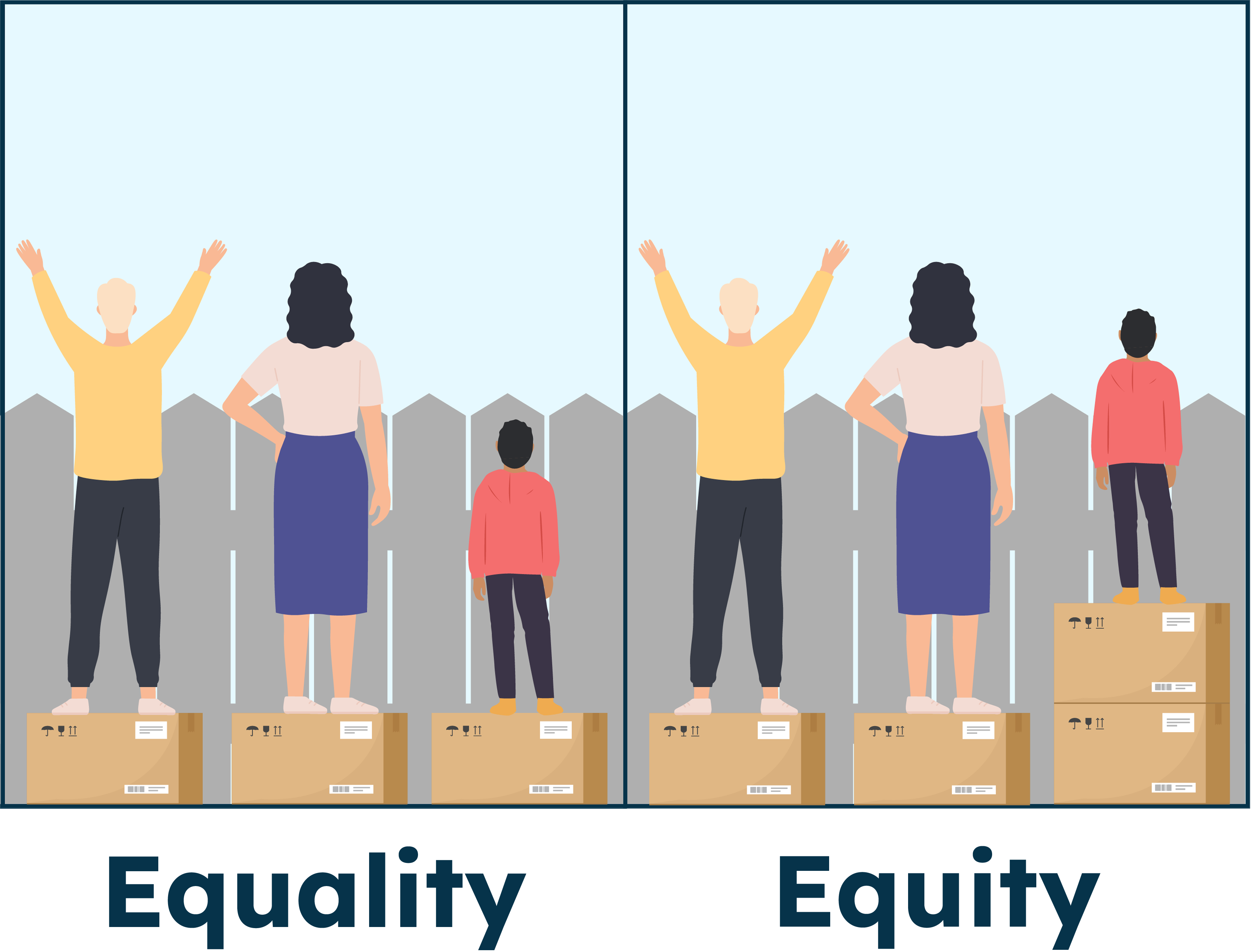
These two concepts are great examples to get you thinking. However, they are perhaps not the most practical examples in a real-life setting. So, let’s look at some real-world alternatives.
Equity Vs. Equality in Practice
When organizations push for equality-based solutions and an equitable workplace, rather than adapting services and policies to meet individual needs, they fail to consider the diverse lived experiences of individuals and communities. Regardless of whether you work in the public or private sector, your staff, customers, and clients will all be affected by equity factors in the workplace in one way or another. Here are a few examples from a business perspective:
Equity in Services
Imagine you’re a local or federal government member that needs to manage a funding cut by reducing the operational hours of community centers in your area. An equality-based approach would simply mean cutting the opening hours at each center by the same amount. An equity-based approach would involve researching how many hours each center is used for, and reducing hours in locations where community use is less frequent.
Equity in the Community
Let’s say you’re a private-sector company distributing marketing materials about a new product or service, or a public-sector organization publicizing new community initiatives. You give the same materials to everyone, but 30% of the residents in your area don’t read English as a first language. To be equitable and provide everyone with the same information, you’d need to print/email the information in other languages too.
Equity in Education
Students from all backgrounds should have equal education opportunities, from early childhood to higher education. You might think equal learning opportunities mean having computer labs with the same number of computers and operating hours for each school. However, a more equitable approach would be to operate longer opening hours and have more computers and printers at schools in lower-income neighborhoods where students are less likely to have the resources they need at home.
Equity in the Online World
The information on your website is unlikely to be accessible or inclusive of everyone because no uniform solution can account for variations in individual needs. To provide equitable online experiences for people with varied physical, cognitive, neurological, and linguistic differences, you need to utilize accessibility software like the Recite Me Toolbar. Comprising customization options so website visitors can make their own decisions about how they use your website, our assistive toolbar helps you to provide equitable online experiences for everyone.
Our 40-page Digital Accessibility & Inclusion Toolkit helps businesses break down online barriers and make a real impact. It offers practical advice on all aspects of digital accessibility, from writing an accessibility statement to accessible website tips and inclusive hiring.


Encouraging Equity and Inclusion
Understanding the difference between equity and equality is crucial in reducing disparities within our workplaces, homes, and communities.
Join us in our mission to create a more equal and inclusive world. When you actively support and embrace equity within your own sphere of influence, you help drive positive change that leads to more equitable solutions for everyone in our modern-day society.
Want to learn more about the Recite Me toolbar? Get in touch with one of our team today, try it for yourself, or schedule a free demo to learn more about how harnessing the power of tech for good can provide a more equitable online experience for your customers, clients, and supporters.

